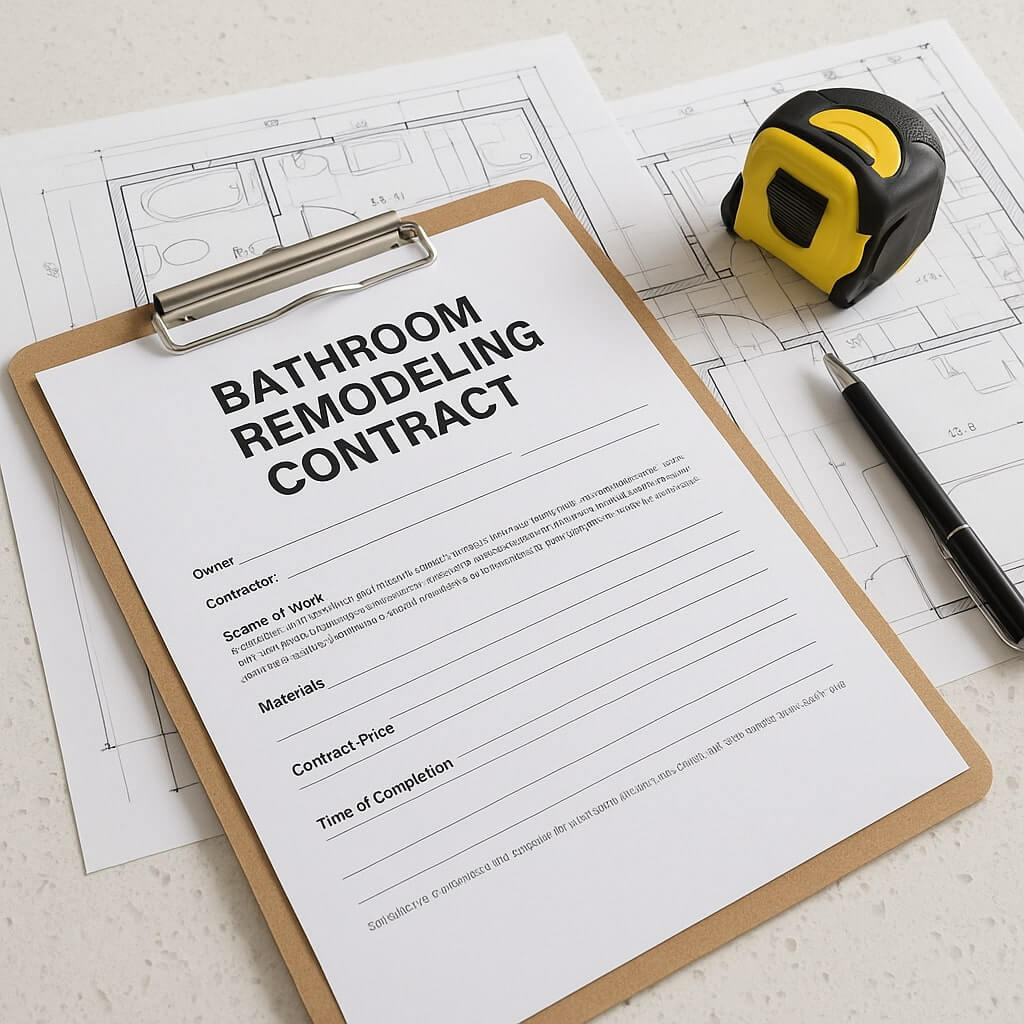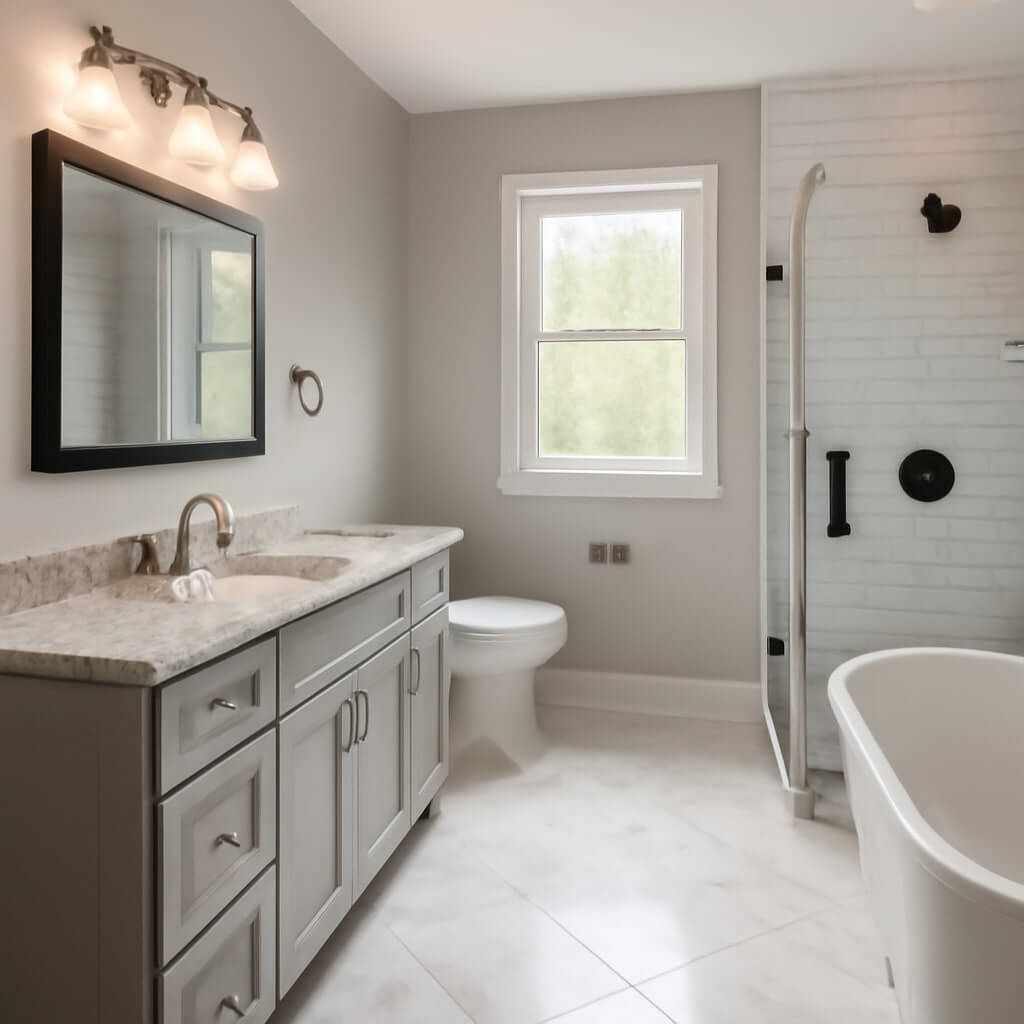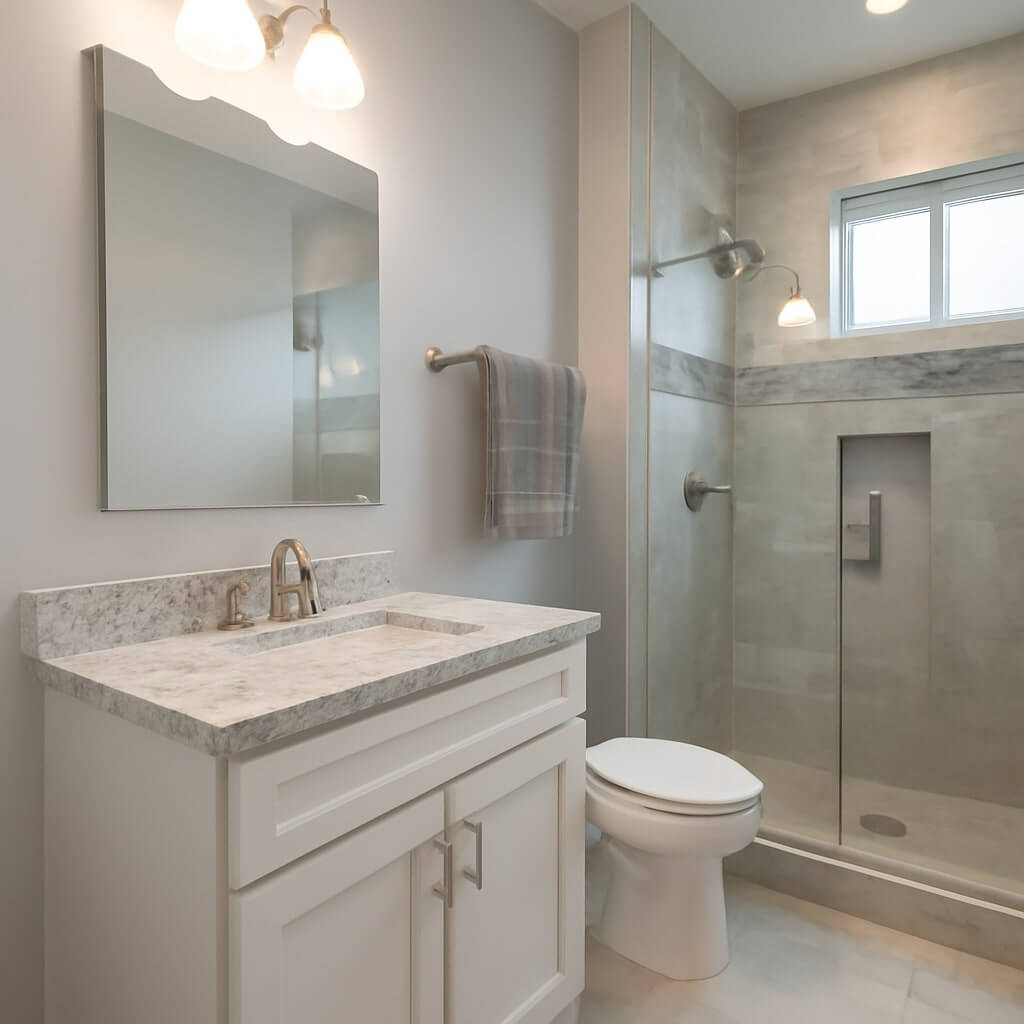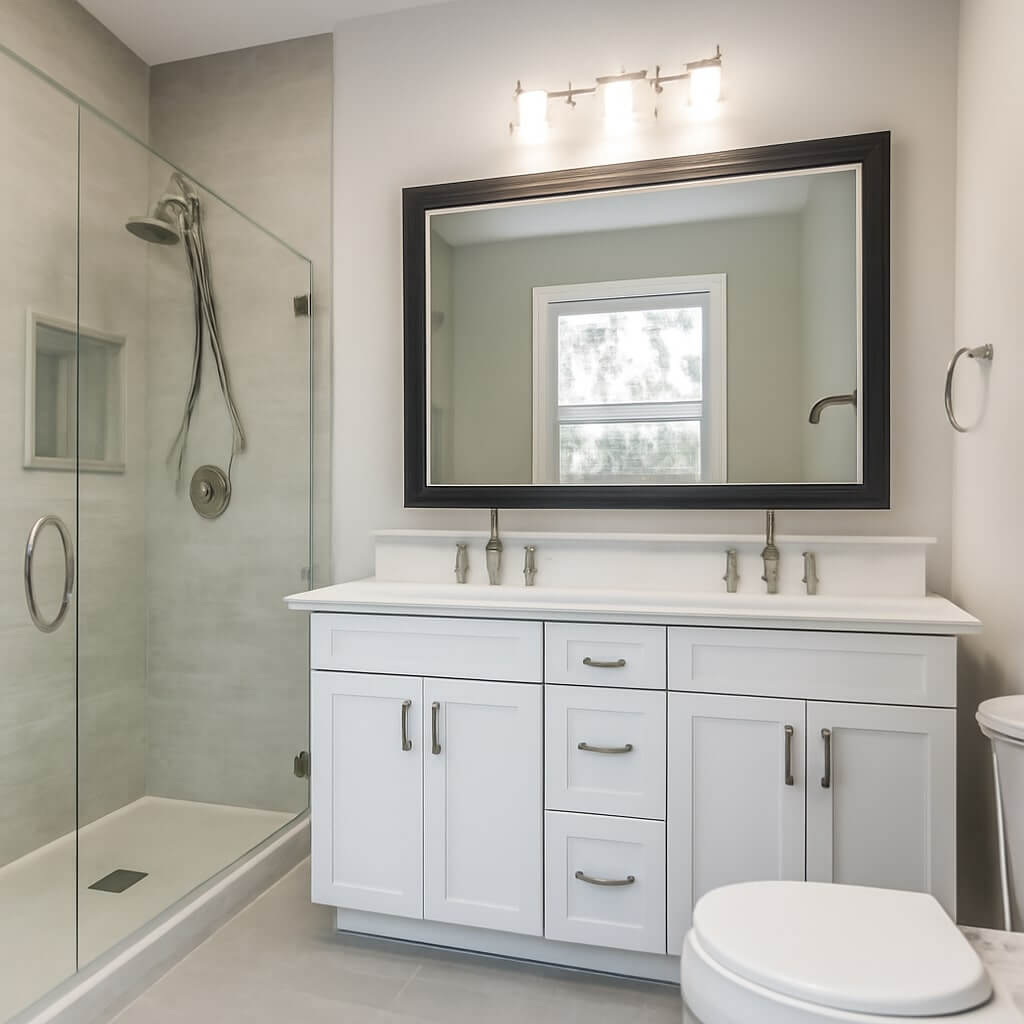When you’re planning a bathroom remodel, having a solid contract is essential. It should clearly outline the scope of work, payment terms, and project timeline. You’ll want to specify materials and finishes, as well as establish change order procedures for any adjustments during the project. Understanding these elements helps protect your investment and guarantees everyone is on the same page. What specific details should you prioritize to avoid potential conflicts?
Key Takeaways
- Clearly outline the scope of work, including design details, materials, finishes, and plumbing placements to avoid misunderstandings.
- Establish payment terms, including deposit amounts, payment methods, and milestone payments tied to project progress.
- Define a project timeline with specific milestones and deadlines to ensure accountability and timely completion.
- Specify materials and installation standards to ensure durability and alignment with the aesthetic vision.
- Include change order procedures to formally document modifications, ensuring alignment on scope, budget, and timelines.
Detailed Scope of Work
When you’re planning a bathroom remodel, it’s essential to outline a detailed scope of work to guarantee every aspect of the project is clearly defined.
Start by specifying design specifics, including layout, materials, and finishes. Make sure you address plumbing requirements, such as sink, shower, and toilet placements, along with necessary upgrades to existing systems.
Clearly document timelines for each phase, from demolition to installation. This clarity prevents misunderstandings and guarantees that contractors meet your expectations.
Payment Terms and Schedule
A well-defined payment terms and schedule is essential to guarantee a smooth bathroom remodeling project.
Clearly outline the deposit amount required to initiate work, typically a percentage of the total cost. Specify acceptable payment methods, whether through checks, credit cards, or electronic transfers.
Establish milestones for additional payments based on project progress, ensuring both you and the contractor understand when payments are due. Include a final payment clause upon project completion, which should only occur after a satisfactory walkthrough.
Project Timeline
Establishing a clear project timeline is essential for ensuring that your bathroom remodeling stays on track and meets your expectations.
Include specific timeline milestones in your contract to outline key phases, such as design approval, demolition, and installation. Each milestone should have completion deadlines to hold both you and the contractor accountable.
Make sure to discuss potential delays and how they’ll be handled, as unforeseen issues may arise. By setting these parameters, you can effectively manage progress and maintain open communication throughout the project, ultimately leading to a successful and timely bathroom remodel that aligns with your vision.
Materials and Specifications
Selecting the right materials and specifications is essential for achieving the desired aesthetic and functionality in your bathroom remodel. Clearly define the material types you plan to use and verify they meet installation standards. This not only enhances durability but also aligns with your vision.
| Material Type | Specifications | Installation Standards |
|---|---|---|
| Ceramic Tile | Size: 12″x12″, Color: White | Thin-set mortar, Grout |
| Vanity Cabinet | Wood: Maple, Finish: Glossy | Level and secure to wall |
| Countertop | Material: Quartz, Thickness: 1″ | Sealed edges, Secure mounting |
| Fixtures | Type: Stainless Steel | Follow manufacturer guidelines |
| Lighting | Style: Modern, Wattage: 60W | Electrical code compliance |
Change Order Procedures
Change orders are essential documents that outline any modifications to the original remodeling agreement.
You’ll need to understand the approval process for these changes to guarantee that all parties are aligned on scope, budget, and timelines.
Knowing how to navigate this procedure can prevent misunderstandings and keep your project on track.
Definition of Change Orders
While planning your bathroom remodel, you may encounter situations that require adjustments to the original design or scope of work. This is where change orders come into play.
A change order is a formal document that outlines modifications requested by you or the contractor, detailing alterations in materials, timelines, or costs. Understanding this definition clarification is vital, as it guarantees both parties acknowledge and agree to the changes.
Change orders are essential for maintaining clear communication and avoiding disputes, as they provide a written record of adjustments, protecting your interests throughout the remodeling process.
Approval Process Details
To guarantee a smooth remodeling process, you’ll need to follow a clear approval process for any change orders. Establishing approval criteria guarantees that all modifications meet your project’s standards. Additionally, defining decision authority clarifies who can approve changes, minimizing delays.
Here’s a table to help outline the process:
| Step | Responsible Party |
|---|---|
| Submit Change Order | Homeowner |
| Review Change Order | Project Manager |
| Approve/Reject Order | Designated Authority |
| Implement Changes | Contractor |
Following these steps will streamline decision-making and keep your project on track.
Warranty and Guarantees
A solid warranty and guarantees can provide you with peace of mind when undertaking a bathroom remodeling project.
Confirm your contract clearly outlines the following:
- Warranty Coverage: Specify what aspects of the work are covered under warranty, including labor and materials.
- Guarantee Period: Define the length of time the warranty remains effective, allowing you to address issues without additional costs.
- Exclusions: Clarify any limitations or exclusions to avoid misunderstandings later.
These elements not only protect your investment but also establish trust with your contractor, confirming a smoother remodeling experience.
Always read and understand the warranty terms before signing.
Conclusion
In summary, a well-crafted bathroom remodeling contract is essential for a successful project. By including a detailed scope of work, clear payment terms, a realistic timeline, specified materials, and procedures for change orders, you can guarantee smooth communication and alignment of expectations. Don’t forget to address warranties and guarantees to protect your investment. Taking these steps will help you avoid misunderstandings and foster a positive working relationship with your contractor.




